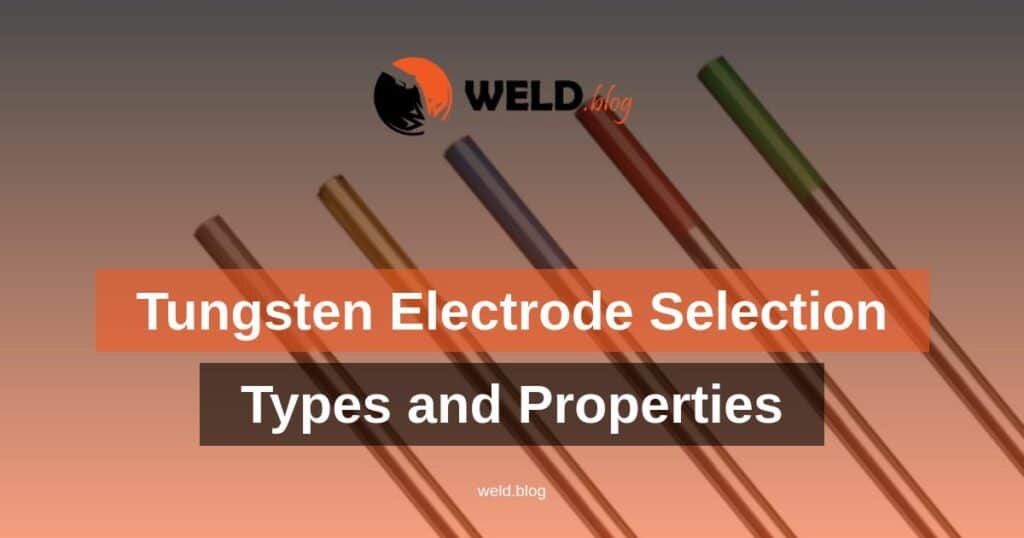Tungsten electrodes are widely used in the welding industry due to their high melting point, high conductivity, and ability to resist thermal shock. When choosing a tungsten electrode, it is important to consider factors such as electrode size, current carrying capacity, and chemical composition. In this article, we will discuss the various types of tungsten electrodes and their properties to help you make an informed decision for your welding needs.
Types of Tungsten Electrodes
There are several types of tungsten electrodes available in the market, each with their own unique characteristics and properties. Here are some of the most common types:
1. Pure Tungsten Electrodes (WP)
Pure tungsten electrodes (WP) are made from 99.5% tungsten and are the most commonly used electrodes for AC welding. They have a low current carrying capacity and are not suitable for DC welding. Pure tungsten electrodes are best suited for welding aluminum, magnesium, and other non-ferrous metals.
2. Thoriated Tungsten Electrodes (WT20)
Thoriated tungsten electrodes (WT20) are made from a blend of tungsten and thorium oxide. They have a higher current carrying capacity than pure tungsten electrodes and are suitable for both AC and DC welding. Thoriated tungsten electrodes are best suited for welding steel, stainless steel, and nickel alloys.
3. Ceriated Tungsten Electrodes (WC20)
Ceriated tungsten electrodes (WC20) are made from a blend of tungsten and cerium oxide. They have a moderate current carrying capacity and are suitable for both AC and DC welding. Ceriated tungsten electrodes are best suited for welding steel, stainless steel, and nickel alloys.
4. Lanthanated Tungsten Electrodes (WL20)
Lanthanated tungsten electrodes (WL20) are made from a blend of tungsten and lanthanum oxide. They have a high current carrying capacity and are suitable for both AC and DC welding. Lanthanated tungsten electrodes are best suited for welding steel, stainless steel, and nickel alloys.
Properties of Tungsten Electrodes
When choosing a tungsten electrode, it is important to consider its properties to ensure optimum welding performance. Here are some of the most important properties to consider:
1. Melting Point
Tungsten has the highest melting point of all metals, which makes it an ideal choice for welding applications that involve high temperatures.
2. Current Carrying Capacity
The current carrying capacity of a tungsten electrode is a measure of its ability to conduct electricity. A higher current carrying capacity allows for a higher amperage, which is necessary for welding thicker materials.
3. Size
The size of a tungsten electrode is an important factor to consider when choosing an electrode. A larger electrode will have a higher current carrying capacity and be able to handle more heat, while a smaller electrode will have a lower current carrying capacity but will provide greater welding detail.
4. Chemical Composition
The chemical composition of a tungsten electrode can affect its performance and suitability for different types of welding applications. Different types of tungsten electrodes contain varying amounts of additives, such as thorium oxide, cerium oxide, and lanthanum oxide, that can enhance the electrode’s properties.
Choosing the right tungsten electrode is crucial for achieving high-quality welding results. By understanding the different types of tungsten electrodes and their properties, you can make an informed decision for your welding needs. Whether you are working with aluminum, steel, or nickel alloys, there is a tungsten electrode out there that can help you achieve the perfect weld.
If you are looking for a reliable supplier of tungsten electrodes, look no further than ABC Welding Supplies. We offer a wide range of tungsten electrodes for all types of welding applications, along with expert advice and support to help you make the right choice. Contact us today to learn more!

